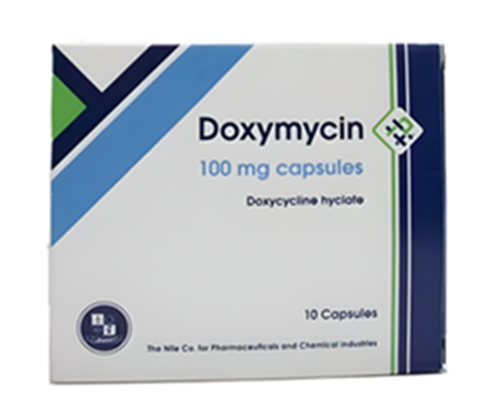Description
Trade name:
Clarikan S. R.
Composition:
Each tablet contains:
Clarithromycin 500 mg
Excipients:
corn starch, microcrystalline cellulose, sodium starch glycolate, purified talc, povidone K-30, magnesium stearate; shell: Opadry II pink.
Properties:
Semi-synthetic antibiotic of the macrolide group. Suppresses protein synthesis in the microbial cell, interacting with the 50S ribosomal subunit of bacteria. It acts mainly bacteriostatically, and also bactericidal.
Active against gram-positive aerobic microorganisms – Staphylococcus aureus, Streptococcus pyogenes, Streptococcus pneumonia, Listeria monocytogenes; aerobic gram-negative microorganisms – Haemophilus influenzae, Haemophilus parainfluenzae, Moraxella (Branhamella) catarrhalis, Neisseria gonorrhoea, Legionella pneumophila, Helicobacter pylori; predominantly intracellular microorganisms – Mycoplasma pneumonia, Chlamydia pneumonia (TWAR), Mycobacterium leprae, Mycobacterium kansaii, Mycobacterium chelonae, Mycobacterium fortitum, Mycobacterium avium complex (MAC) – a complex that includes Mycobacterium avium, Mycobacterium intracellulare.
Indications:
Treatment of infectious and inflammatory diseases caused by pathogens sensitive to clarithromycin: infections of the upper respiratory tract and ENT organs (tonsillopharyngitis, otitis media, acute sinusitis); lower respiratory tract infections (acute bronchitis, exacerbation of chronic bronchitis, community-acquired bacterial and atypical pneumonia); odontogenic infections; skin and soft tissue infections; mycobacterial infections (M. avium complex, M. kansasii, M. marinum, M. leprae) and their prevention in AIDS patients; eradication of Helicobacter pylori in patients with duodenal ulcer or gastric ulcer (only as part of combination therapy).
Method of administration and dosage:
The optimal dosage regimen is determined by the doctor. It is necessary to strictly observe the compliance of the dosage form of a particular drug with the indications for use and dosage regimen.
Individual. When taken orally for adults and children over 12 years old, a single dose is 0.25-1 g, frequency of administration 2 times / day.
For children under 12 years of age, the daily dose is 7.5-15 mg/kg/day in 2 doses.
In children, clarithromycin should be used in the appropriate dosage form intended for this category of patients.
The duration of treatment depends on the indications.
In patients with impaired renal function (CC less than 30 ml/min or serum creatinine level more than 3.3 mg/dl), the dose should be reduced by 2 times or the interval between doses should be doubled.
Maximum daily doses: for adults – 2 g, for children – 1 g.
Contraindications:
A history of prolongation of the QT interval, ventricular arrhythmia or ventricular tachycardia of the “pirouette” type; hypokalemia (risk of prolongation of the QT interval); severe liver failure occurring simultaneously with renal failure; history of cholestatic jaundice/hepatitis that developed during the use of clarithromycin; porphyria; first trimester of pregnancy; lactation period (breastfeeding); concomitant administration of clarithromycin with astemizole, cisapride, pimozide, terfenadine; with ergot alkaloids, such as ergotamine, dihydroergotamine; with oral midazolam; with HMG-CoA reductase inhibitors (statins), which are largely metabolized by the CYP3A4 isoenzyme (lovastatin, simvastatin), with colchicine; with ticagrelor or ranolazine; hypersensitivity to clarithromycin and other macrolides.
Precautions:
Cross-resistance is observed between macrolide antibiotics.
Antibiotic treatment changes the normal intestinal flora, so the development of superinfection caused by resistant microorganisms is possible.
It should be borne in mind that severe persistent diarrhea may be due to the development of pseudomembranous colitis.
It is necessary to periodically monitor the prothrombin time in patients receiving clarithromycin simultaneously with warfarin or other oral anticoagulants.
Side effects:
From the digestive system: often – diarrhea, vomiting, dyspepsia, nausea, abdominal pain.
Allergic reactions: often – rash; uncommon – anaphylactoid reaction, hypersensitivity, bullous dermatitis, itching, urticaria, maculopapular rash.
From the skin: often – intense sweating; frequency unknown – acne, hemorrhage.
From the sense organs: often – dysgeusia; uncommon – vertigo, hearing impairment, tinnitus; frequency unknown – deafness, ageusia, parosmia, anosmia.
From the cardiovascular system: often – vasodilation.
Local reactions: very often – phlebitis at the injection site, often – pain at the injection site, inflammation at the injection site.
From the body as a whole: uncommon – malaise, hyperthermia, asthenia, chest pain, chills, fatigue.
Storage method:
At a temperature not exceeding 30 degrees. In a dry place









